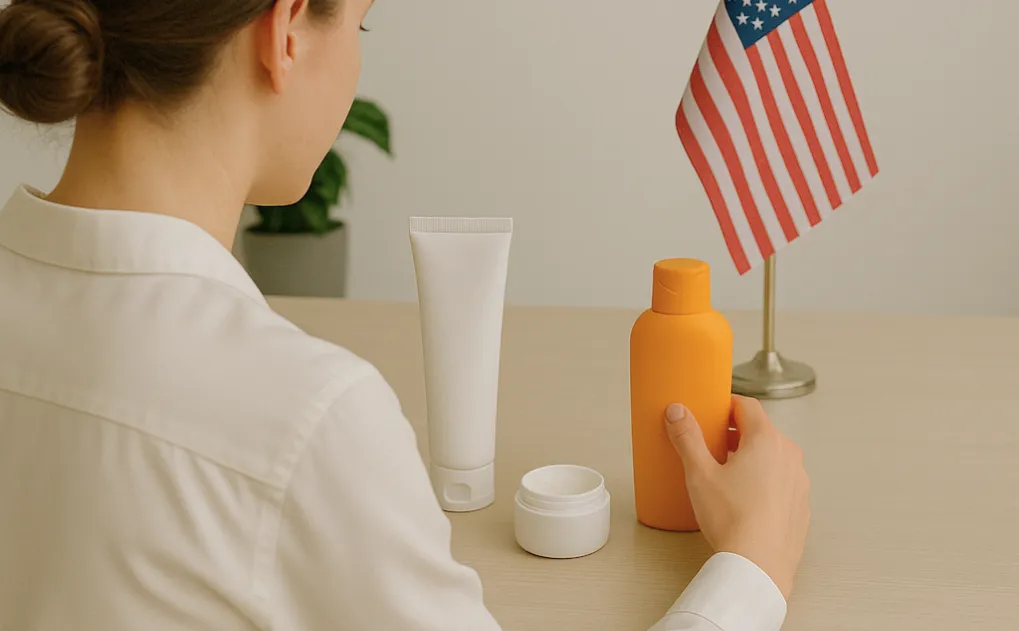
In the United States, the classification of a product as a cosmetic, a drug, or both depends primarily on its intended use a concept determined by claims, perception, and ingredients. This distinction is essential for brands to comply with U.S. regulations under the Federal Food, Drug, and Cosmetic Act (FD&C Act) and enforced by the Food and Drug Administration (FDA).
What is a Cosmetic?
According to the FDA, a cosmetic is a product intended to:
- Cleanse
- Beautify
- Promote attractiveness
- Alter the appearance
Examples include moisturizers, shampoos, makeup, perfumes, and deodorants. These products do not require pre-market approval, unless they contain color additives, which must comply with specific requirements.
✅ Permissible cosmetic claims:
- “For a brighter complexion”
- “Hydrates and softens skin”
- “Improves the appearance of fine lines”
- “Promotes fuller-looking hair”
These claims are aesthetic in nature and must not imply a therapeutic benefit.
What is an OTC Drug?
The FDA defines a drug as a product “intended for use in the diagnosis, cure, mitigation, treatment, or prevention of disease,” or “to affect the structure or any function of the body.”
An OTC drug (Over-the-Counter) is a nonprescription medicine that must comply with either:
- An established OTC monograph,
or
- Received approval under New Drug Application (NDA) process
Examples include:
- Sunscreens (SPF)
- Anti-dandruff shampoos
- Acne treatments
- Hand sanitizers
- Antiperspirants
✅ Permissible OTC drug claims:
- “Treats acne”
- “Prevents sunburn”
- “Reduces dandruff”
- “Eliminates dark spots”
- “Restores hair growth”
These claims go beyond appearance and imply therapeutic action on the skin, scalp, or body.
When a Product is Both Cosmetic and Drug?
Some products fall at the intersection of both categories. For instance:
- Anti-dandruff shampoos cleanse the hair (cosmetic) and treat dandruff (drug)
- SPF makeup beautifies (cosmetic) and prevents sunburn (drug)
- Acne-cleansing face washes may be both, depending on active ingredient concentration and claims
In such cases, products must comply with the requirements of both categories: cosmetic labeling and drug monograph or NDA compliance.
How Is Product Classification Determined?
The intended use of a product is based on three elements:
1. Claims
Statements made in marketing, packaging, or advertising.
For example:
- “moisturizes skin” is cosmetic
- “stimulates collagen production” is drug.
2. Consumer perception
If consumers believe a product treats a medical condition, it may be classified as a drug, even without explicit claims.
3. Ingredient function
Some ingredients (e.g. salicylic acid, fluoride, zinc pyrithione) have recognized therapeutic uses and may trigger drug classification based on their concentration and purpose.
Example:
If a product contains salicylic acid between 0.5% and 2%, it can claim to treat acne as an OTC drug, under the Topical Acne Drug Products monograph. If the concentration is below 0.5%, the product may only make cosmetic claims such as exfoliation or skin smoothing.
Regulatory Requirements for OTC Products
To market a compliant OTC drug in the U.S., companies must:
- Determine the applicable monograph
Identify the drug category and confirm that active ingredients, dosage forms, and claims align with FDA monograph requirements. Products that fall outside the monograph must obtain FDA approval through a New Drug Application (NDA), a more complex and less commonly used pathway for OTC drugs.
- Register the establishment
Domestic and foreign facilities that manufacture, repack, or relabel OTC drugs must register with the FDA and comply with Good Manufacturing Practices (GMP).
- Assign an NDC (National Drug Code)
The 10-digit NDC identifies the labeler, product, and package size. It does not need to appear on the label.
- List the product
File the product and labeling with the FDA. Listings are published on DailyMed.
- Ensure compliant labeling
Labels must include drug facts, active ingredients, directions, warnings, etc., as per FDA format.
- Appoint a U.S. Agent
Required if the company is located outside the U.S.
- Report adverse events
Through the FDA MedWatch portal, serious adverse events must be reported—similar to MoCRA obligations for cosmetics.
- Maintain annual compliance
Establishment registration: renewed each year between October–December
Product listing: must be updated in June and December
Need Regulatory Support?
If you have any doubts about your product classification, permissible claims, or the requirements applicable to cosmetics and over-the-counter (OTC) drugs, our regulatory affairs experts are here to help. They can assist you at every stage—from reviewing formulas and claims to ensuring label compliance and FDA registration.
👉 Contact us for tailored and reliable support.
In the United States, the classification of a product as a cosmetic, a drug, or both depends primarily on its intended use a concept determined by claims, perception, and ingredients. This distinction is essential for brands to comply with U.S. regulations under the Federal Food, Drug, and Cosmetic Act (FD&C Act) and enforced by the Food and Drug Administration (FDA).
What is a Cosmetic?
According to the FDA, a cosmetic is a product intended to:
- Cleanse
- Beautify
- Promote attractiveness
- Alter the appearance
Examples include moisturizers, shampoos, makeup, perfumes, and deodorants. These products do not require pre-market approval, unless they contain color additives, which must comply with specific requirements.
✅ Permissible cosmetic claims:
- “For a brighter complexion”
- “Hydrates and softens skin”
- “Improves the appearance of fine lines”
- “Promotes fuller-looking hair”
These claims are aesthetic in nature and must not imply a therapeutic benefit.
What is an OTC Drug?
The FDA defines a drug as a product “intended for use in the diagnosis, cure, mitigation, treatment, or prevention of disease,” or “to affect the structure or any function of the body.”
An OTC drug (Over-the-Counter) is a nonprescription medicine that must comply with either:
- An established OTC monograph,
or
- Received approval under New Drug Application (NDA) process
Examples include:
- Sunscreens (SPF)
- Anti-dandruff shampoos
- Acne treatments
- Hand sanitizers
- Antiperspirants
✅ Permissible OTC drug claims:
- “Treats acne”
- “Prevents sunburn”
- “Reduces dandruff”
- “Eliminates dark spots”
- “Restores hair growth”
These claims go beyond appearance and imply therapeutic action on the skin, scalp, or body.
When a Product is Both Cosmetic and Drug?
Some products fall at the intersection of both categories. For instance:
- Anti-dandruff shampoos cleanse the hair (cosmetic) and treat dandruff (drug)
- SPF makeup beautifies (cosmetic) and prevents sunburn (drug)
- Acne-cleansing face washes may be both, depending on active ingredient concentration and claims
In such cases, products must comply with the requirements of both categories: cosmetic labeling and drug monograph or NDA compliance.
How Is Product Classification Determined?
The intended use of a product is based on three elements:
1. Claims
Statements made in marketing, packaging, or advertising.
For example:
- “moisturizes skin” is cosmetic
- “stimulates collagen production” is drug.
2. Consumer perception
If consumers believe a product treats a medical condition, it may be classified as a drug, even without explicit claims.
3. Ingredient function
Some ingredients (e.g. salicylic acid, fluoride, zinc pyrithione) have recognized therapeutic uses and may trigger drug classification based on their concentration and purpose.
Example:
If a product contains salicylic acid between 0.5% and 2%, it can claim to treat acne as an OTC drug, under the Topical Acne Drug Products monograph. If the concentration is below 0.5%, the product may only make cosmetic claims such as exfoliation or skin smoothing.
Regulatory Requirements for OTC Products
To market a compliant OTC drug in the U.S., companies must:
- Determine the applicable monograph
Identify the drug category and confirm that active ingredients, dosage forms, and claims align with FDA monograph requirements. Products that fall outside the monograph must obtain FDA approval through a New Drug Application (NDA), a more complex and less commonly used pathway for OTC drugs.
- Register the establishment
Domestic and foreign facilities that manufacture, repack, or relabel OTC drugs must register with the FDA and comply with Good Manufacturing Practices (GMP).
- Assign an NDC (National Drug Code)
The 10-digit NDC identifies the labeler, product, and package size. It does not need to appear on the label.
- List the product
File the product and labeling with the FDA. Listings are published on DailyMed.
- Ensure compliant labeling
Labels must include drug facts, active ingredients, directions, warnings, etc., as per FDA format.
- Appoint a U.S. Agent
Required if the company is located outside the U.S.
- Report adverse events
Through the FDA MedWatch portal, serious adverse events must be reported—similar to MoCRA obligations for cosmetics.
- Maintain annual compliance
Establishment registration: renewed each year between October–December
Product listing: must be updated in June and December
Need Regulatory Support?
If you have any doubts about your product classification, permissible claims, or the requirements applicable to cosmetics and over-the-counter (OTC) drugs, our regulatory affairs experts are here to help. They can assist you at every stage—from reviewing formulas and claims to ensuring label compliance and FDA registration.
👉 Contact us for tailored and reliable support.




.png)


